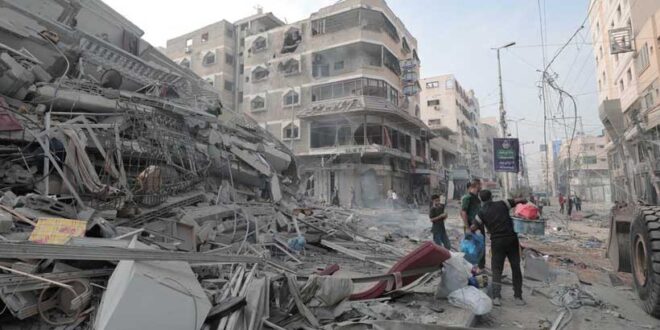Saturday, October 7, the Jewish Sabbath day, the conclusion of the week-long Sukkot festival, and the day following the 50th anniversary of the Yom Kippur War, saw the launch of Operation al-Aqsa Flood by Hamas and other Palestinian armed groups.
This coordinated attack involved air and ground strikes against several Israeli border areas. A major rocket-based air attack was launched at 6 a.m. against the coastal towns of Ashdod and Ashkelon, as well as farther north as Tel Aviv, which is situated around 70 kilometers north of Gaza. Three to five thousand rockets are thought to have been fired on that first day.
After the initial attack, militants stormed the southern Gaza headquarters of the Israeli Defense Forces (IDF) and took control of several military and police buildings. The IDF was caught off guard by Hamas, allowing its forces to swiftly cross the border and advance up to 14 kilometers past it.
Hundreds of Israeli policemen and civilians were killed and abducted by other militants who targeted towns, kibbutzim, and roadways. At least 260 people were found dead by Israeli officials at the scene of a music event close to Re’im, near the security barrier overrun by Hamas fighters, and there are reports of 130 captives having been moved to Gaza.
According to reports, Hamas first broke through the borders by sending troops down on hang gliders. Once inside, the militants demolished the walls and electric gates with explosives. Then, bulldozers were used in a few locations to make room for more militants to enter Israel.
There were many breaches of the security barrier by an estimated 1,000 Hamas militants. Just three of the seven designated border crossings in Gaza are currently fully operational.

